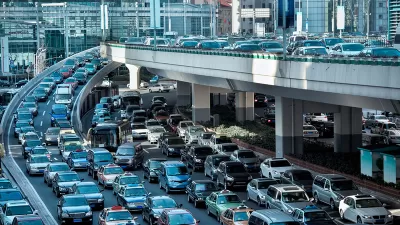The percentage of Americans working primarily from home tripled to over 27 million people during the pandemic. Will the popularity of remote work last?

As questions about the ‘return to the office’ linger, new data from the Census Bureau reveal that the number of people primarily working from home tripled between 2019 and 2021, with a record-high 17.9 percent of Americans working mostly from home.
“Nearly half (48.3%) of workers in the District of Columbia worked from home, the highest percentage of home-based workers among states and state equivalents in 2021.” Other states with high work-from-home rates are Washington, Maryland, Colorado, and Massachusetts, where close to a quarter of workers now work mostly remotely. Correspondingly, commutes have dropped to an average of 25.6 minutes one-way in 2021, two minutes shorter than the average 2019 commute.
Even as COVID-19 fears subside, remote work remains popular with employees and many employers who see advantages in a reduced need for office space and more flexibility in hiring. As technology makes it possible for more industries to shift to remote or hybrid work, the transportation networks, ancillary service industries, and other systems designed around the traditional 9-to-5 commute cycle will have to adapt to the new realities of the post-pandemic city.
FULL STORY: The Number of People Primarily Working From Home Tripled Between 2019 and 2021

Alabama: Trump Terminates Settlements for Black Communities Harmed By Raw Sewage
Trump deemed the landmark civil rights agreement “illegal DEI and environmental justice policy.”

Planetizen Federal Action Tracker
A weekly monitor of how Trump’s orders and actions are impacting planners and planning in America.

How Atlanta Built 7,000 Housing Units in 3 Years
The city’s comprehensive, neighborhood-focused housing strategy focuses on identifying properties and land that can be repurposed for housing and encouraging development in underserved neighborhoods.

In Both Crashes and Crime, Public Transportation is Far Safer than Driving
Contrary to popular assumptions, public transportation has far lower crash and crime rates than automobile travel. For safer communities, improve and encourage transit travel.

Report: Zoning Reforms Should Complement Nashville’s Ambitious Transit Plan
Without reform, restrictive zoning codes will limit the impact of the city’s planned transit expansion and could exclude some of the residents who depend on transit the most.

Judge Orders Release of Frozen IRA, IIJA Funding
The decision is a victory for environmental groups who charged that freezing funds for critical infrastructure and disaster response programs caused “real and irreparable harm” to communities.
Urban Design for Planners 1: Software Tools
This six-course series explores essential urban design concepts using open source software and equips planners with the tools they need to participate fully in the urban design process.
Planning for Universal Design
Learn the tools for implementing Universal Design in planning regulations.
Jessamine County Fiscal Court
Caltrans
Institute for Housing and Urban Development Studies (IHS)
City of Grandview
Harvard GSD Executive Education
Toledo-Lucas County Plan Commissions
Salt Lake City
NYU Wagner Graduate School of Public Service





























